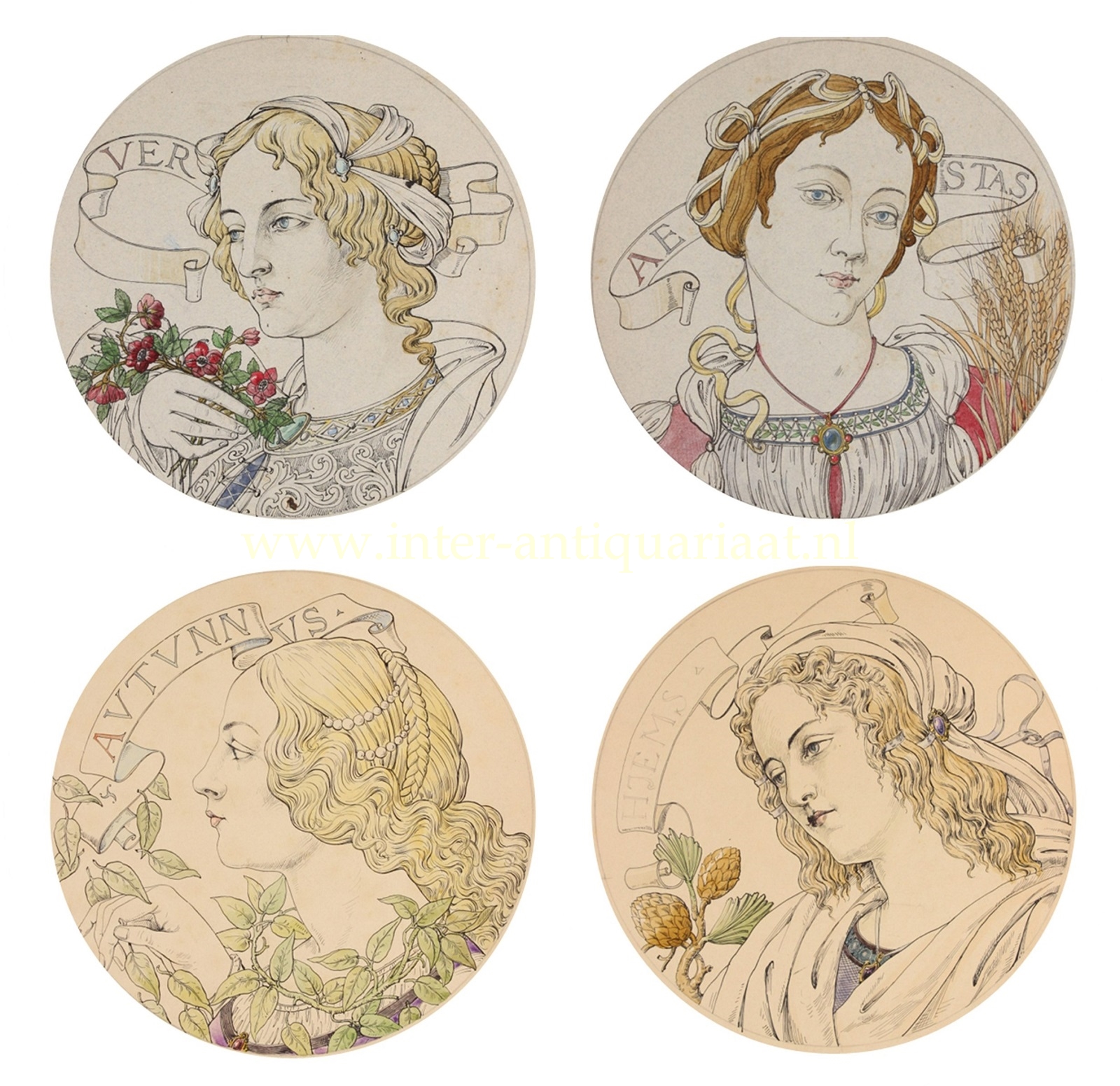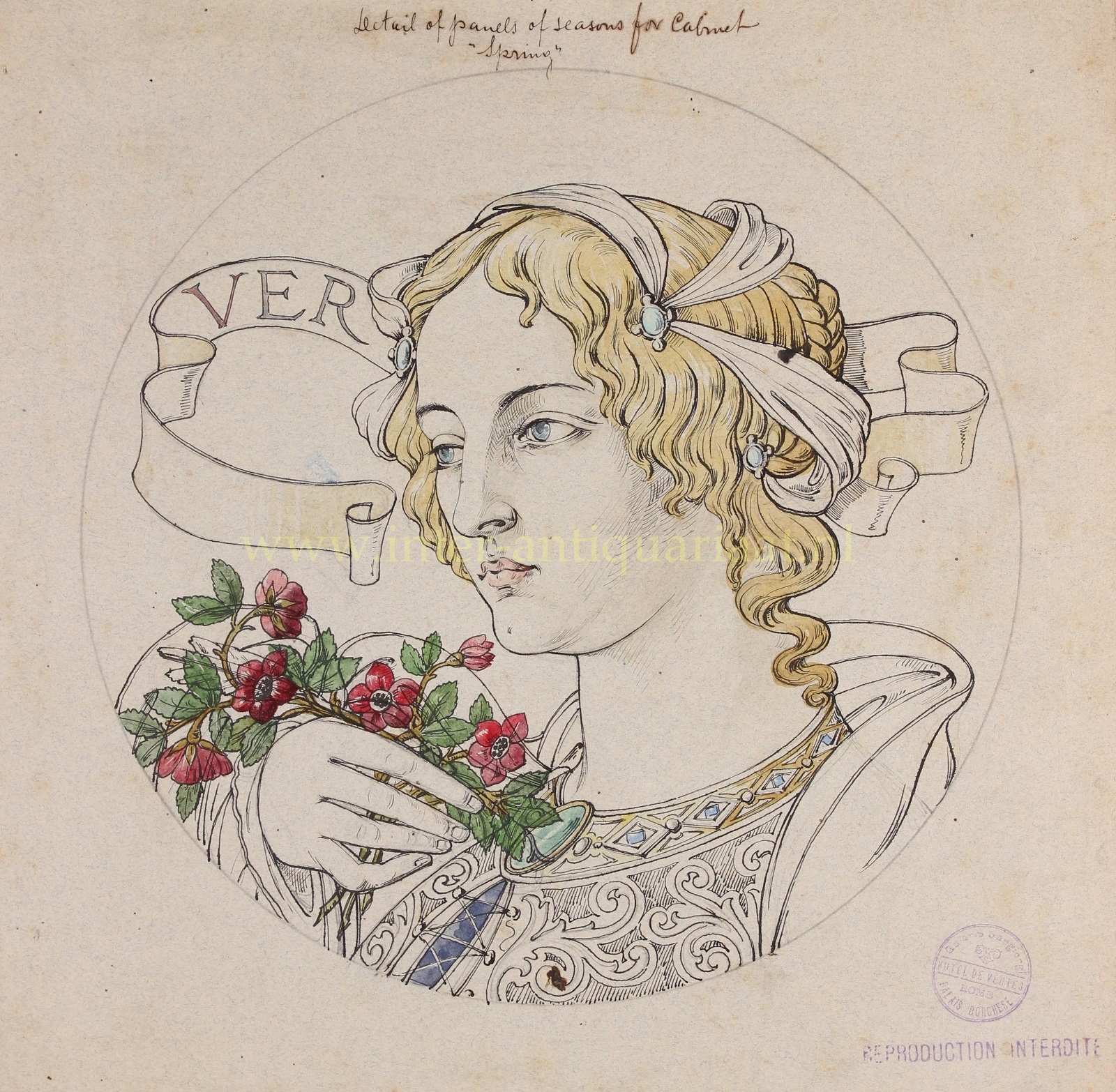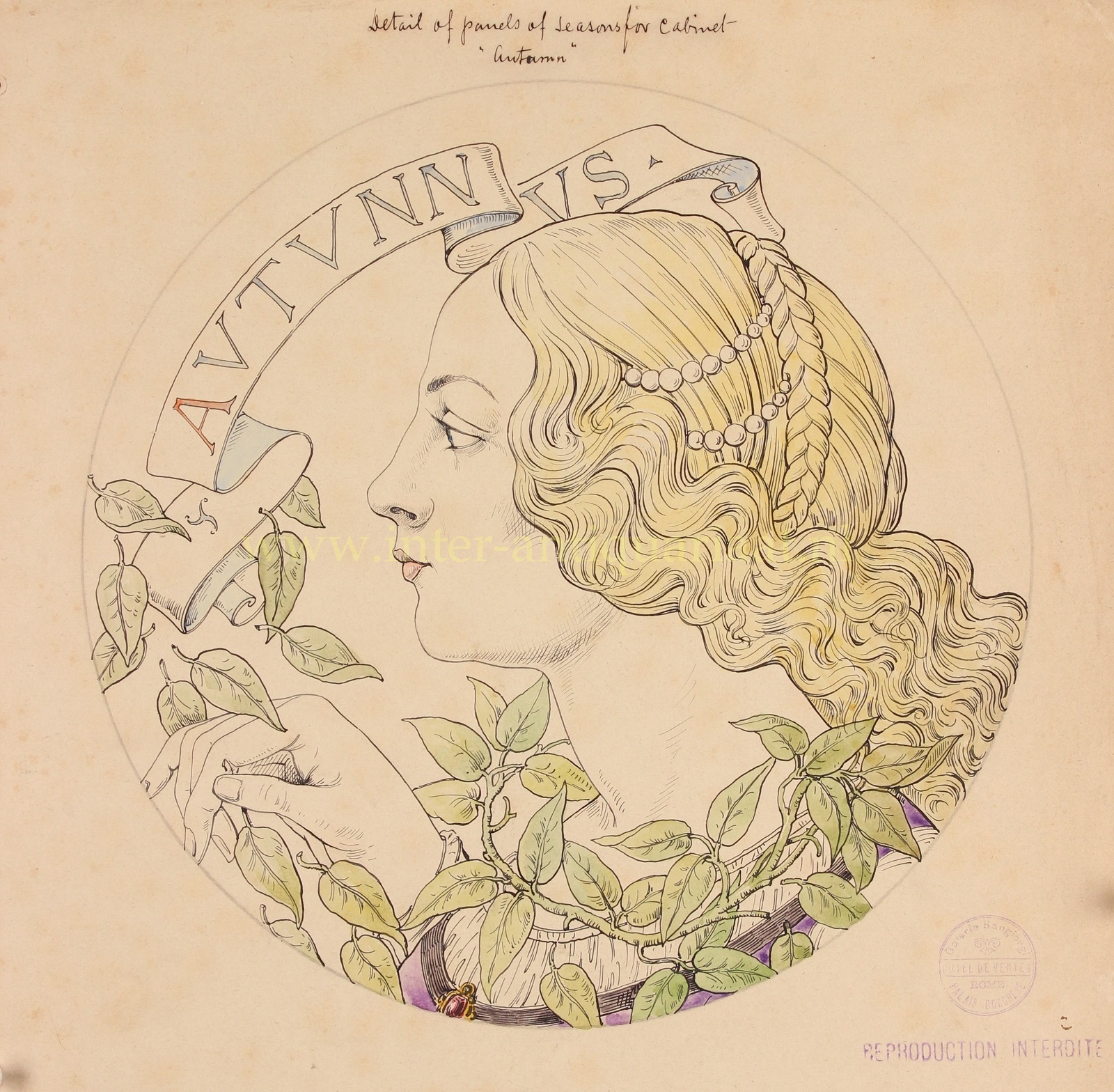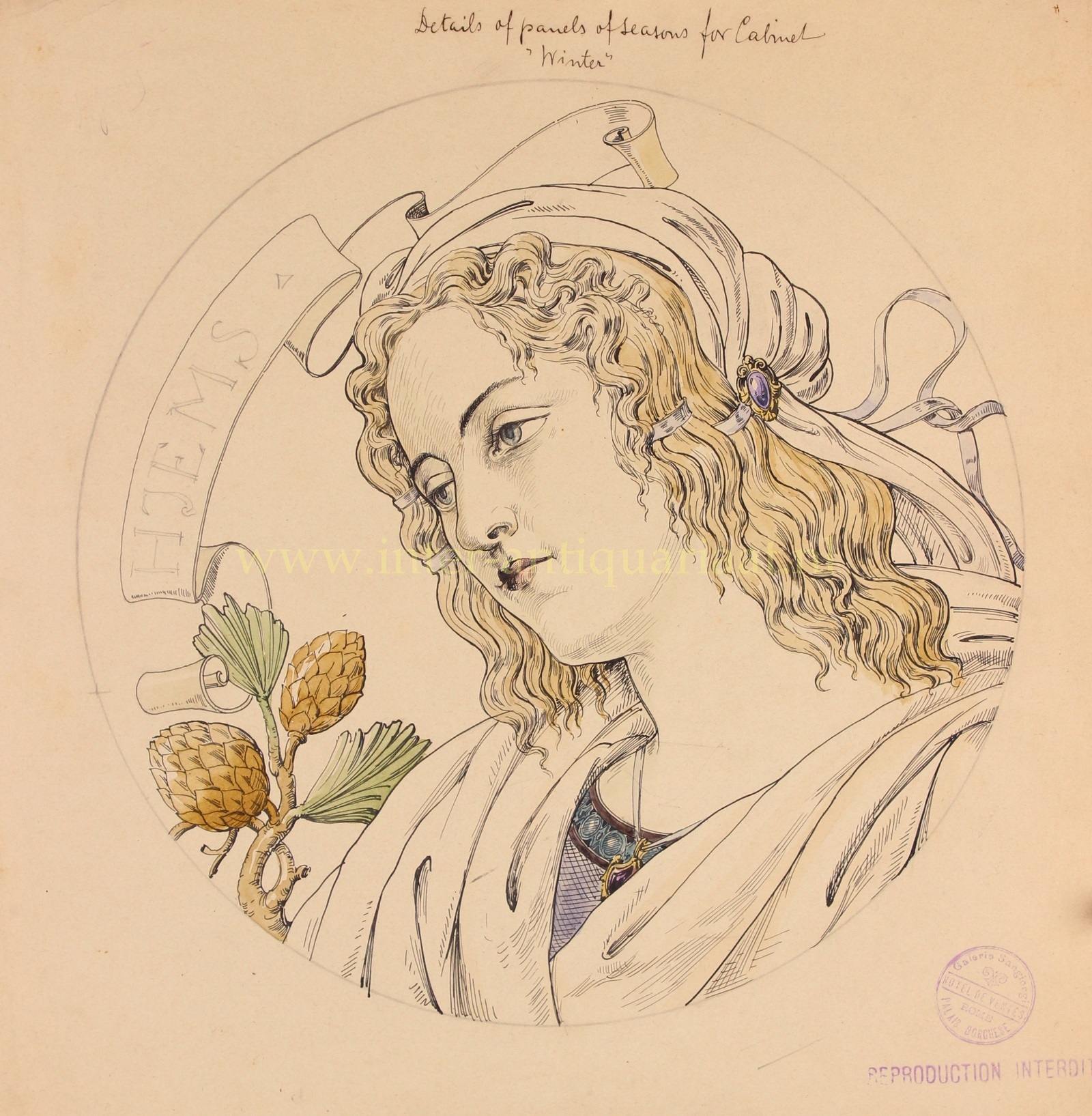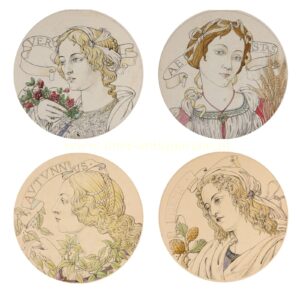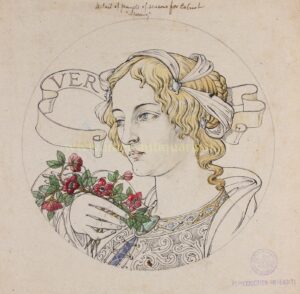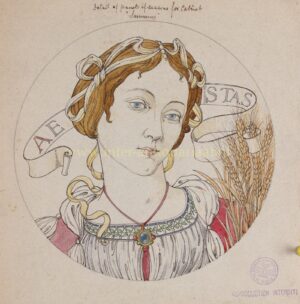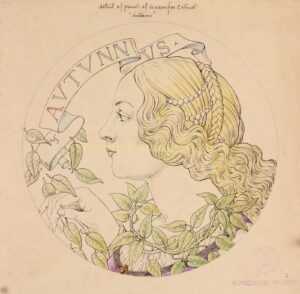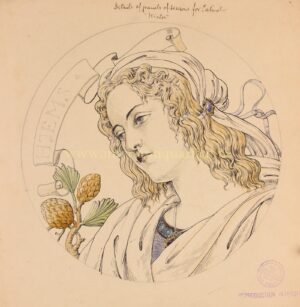Allegories of the four seasons. Drawings in ink and watercolour made by Oreste Marozzi around 1910. Three of the four drawings are signed on the backing board: “O. Marozzi – dis. e dip.” Diameter: each medallion approx. 28 cm.
Liberty style (“Stile Liberty”) the Italian variant of Art Nouveau, flourished between about 1890 and 1914. It took its name from Arthur Lasenby Liberty and the department store he founded in 1874 in London and later in Milan’s Galleria, which specialized in importing ornaments, textiles and art objects from Japan and the Far East.
Liberty style was especially popular in large cities outside of Rome which were eager to establish a distinct cultural identity, particularly Milan, Palermo and Turin, the city where the first major exposition of the style in Italy was held in 1902.
Like other versions of Art Nouveau, Liberty style had the ambition of turning ordinary objects, such as chairs and windows, into works of art. Unlike the French and Belgian Art Nouveau, based primarily on nature, Liberty style was more strongly influenced by the Baroque style, with lavish ornament and color, both on the interior and exterior. The Italian poet and critic Gabriele d’Annunzio wrote in 1889, as the style was just beginning, “the genial sensual debauche of the Baroque sensibility is one of the determining variants of the Italian Art Nouveau.”
The allegories of the four seasons which we have here, are designs for panels of a cabinet.
“Ver” (Spring) has her hair adorned with braids, ribbons, and light blue gems, probably aquamarines. They match the gems on her dress and can be associated with the freshness and clarity of spring waters. Its tranquil colour may remind one of blooming flowers and the awakening of nature during the spring season. She wears a fine damask dress hinting at her wealth.
In her hand, there is a feather pen and opened letter hidden by a bunch of flowers. What does the season have in mind for her?
With her slightly inclined head, “Aestas” (Summer) reminds us of Botticelli’s Venus but with her hair up and decorated with a softly intertwined ribbon and pearls cascading towards the forehead. What we see of her dress is a celebration of light veils over a red tunic. A large blue gem ornamented with rubies make a necklace that support her gracious looks. She is holding a sheaf of wheat, alluding to Ceres, the personification of harvest and summer,
The portrait of “Autunnus” (Autumn) in profile, is reminiscent of one of Botticelli’s three graces. A cascade of blonde wavy hair is partially pinned on the head with a braid and adorned with two strands of pearls. The maiden’s fingers make their way through the leaves below, while from a branch that wraps around the lady’s neck, we catch a glimpse of a purple dress with a red precious stone (presumably a ruby) at the center, placed above a delicate veiled chemise, in line with the fashion of the Renaissance era.
“Hiems” (Winter) has two pine cones next to her right shoulder, symbolizing the winter season. Her thick blonde hair is protected by a veil fastened with ribbons adorned with an amethyst. She wears a ribbon with a matching pendant as a necklace. The purple gemstones are used to symbolize spirituality, mysticism, and a connection to the divine.
Oreste Marozzi (1874-1947) was an Italian artist and illustrator. Marozzi gained recognition for his contributions to the art world during the late 19th and early 20th centuries. He was associated with the Liberty style. While specific details about Marozzi’s life and career are limited, his illustrations are highly regarded for their beauty and craftsmanship. His work often featured delicate lines, intricate details, and a sense of whimsy. Although Oreste Marozzi might not be as well-known as some other artists of his time, his artistic contributions remain significant.
Provenance: Galleria Sangiorgi. Giorgio Sangiorgi (1886-1965) was a principle of the most renowned art-dealing family in Rome. The firm was located at 117 via Ripetta at Palazzo Borghese and was famous for many important auctions, with catalogues written in collaboration with leading scholars. The galleria specialized in ancient art, furniture, ceramics and textiles.
Price: Euro 3.950,-


